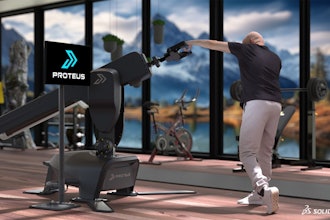Robotics experts at the University of Waterloo are developing exoskeletons and prosthetic legs that can think and make decisions on their own.
The ExoNet system combines sophisticated artificial intelligence and computer vision to mimic able-bodied walking.
The exoskeletons view the surroundings and adjust accordingly, without any patient intervention.
Until now, exoskeletons were operated manually using smartphone applications or joysticks, which can be overwhelming for users.
ExoNet can recognize stairs, doors and other features of the surrounding environment.
Next, the researchers plan to upgrade ExoNet so it can climb stairs, avoid obstacles or take other actions based on the user's current movement and the upcoming terrain.
The researchers compare ExoNet to autonomous car technology.
They say these autonomous exoskeletons and prosthetic legs will one day "walk for themselves."






















